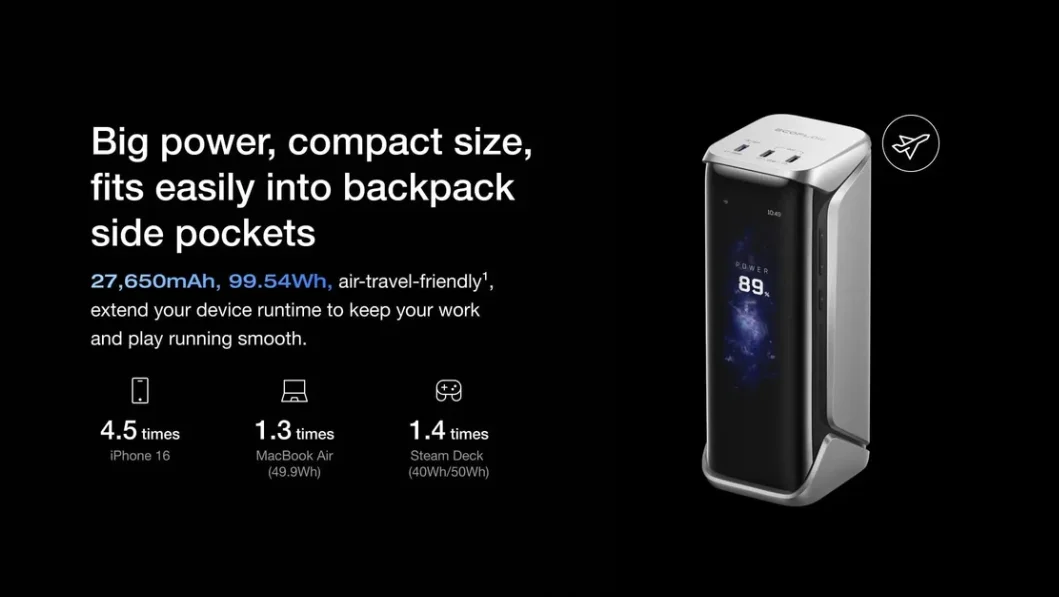Carrying a power bank has become part of everyday life. Whether you are commuting, working on the go, or spending long days away from outlets, having extra power gives you peace of mind. The challenge is choosing the right one when every product claims to offer fast charging, large capacity, or a compact body. A good power bank should fit your habits rather than force you to adjust to it. This guide walks you through the choices that matter so you can pick a model that feels natural to use day after day.
Understand Your Daily Charging Needs
Before comparing features, think about how often you reach for your charger. Some people only need a small boost in the afternoon. Others rely heavily on their phone for work and need multiple charges a day.
As a simple rule, the heavier your usage, the more capacity you should consider. For someone who checks messages and browses occasionally, a smaller power bank is enough. For someone who uses navigation, social apps, calls, and emails throughout the day, choosing a higher capacity option ensures you do not run out of power when it matters.
Balance Capacity with Portability
Capacity is usually the first spec people look at, but it is not the only one that affects your experience. A higher capacity model is useful, yet it is also heavier and bigger. A compact option is easier to carry but will not last as long.
Most phones have batteries within a certain range. To cover one full charge with some room left, choose a capacity slightly above your phone’s battery size. For everyday carry, many users find midrange capacities more comfortable since they offer a balance between size and practicality. If you spend long days outside or travel often, a larger capacity becomes more valuable.
Look at the Output Ports and Charging Speed
Charging speed shapes how convenient your power bank feels in daily use. Slow charging can be frustrating when you only have a short break.
Pay attention to the USB ports and their power output. USB C ports usually support faster speeds and work with more modern devices. Multiple ports also help if you often charge a phone and another small device like earbuds at the same time.
Fast charging is helpful for short charging windows during your day. If your phone supports a higher voltage charging method, choosing a power bank with similar support keeps everything smooth and efficient.

Consider How You Carry It
A power bank should feel easy to bring with you. Some people prefer something that slips into a pocket. Others keep it in a bag all day.
Think about where and how you plan to use it. If you walk often or commute on public transport, a slim design fits better. If you carry a backpack and often use your phone as a work tool, size matters less and capacity becomes the priority.
Small details also influence daily comfort. Built in cables remove the need to remember separate cords. A textured or slightly curved surface is easier to hold while using your phone.
Check How Long It Takes to Recharge
People often focus on how fast a power bank can charge their devices, but forget about how long it takes to recharge the power bank itself. A model with fast input makes your routine easier. You can top it up during breakfast, a short break, or before heading out in the evening. Slower options require planning ahead, which does not fit well with busy schedules.
USB C input usually charges the power bank faster than older ports. If you use the same cable for both your phone and the power bank, it reduces clutter and makes charging more seamless.
Choose Safe and Reliable Features
Safety should be part of your decision. Good power banks include protection against overheating, short circuits, and overcharging. These features run quietly in the background and keep both your devices and the power bank safe.
Temperature control is also important. If you often place your phone and power bank in a bag while charging, proper heat management prevents performance loss. Reliable brands usually highlight these protections clearly in their product descriptions.
Match the Power Bank to Your Daily Routine
Once you understand these factors, the best choice becomes clearer. For a light user, a compact model is easier to live with. For someone who uses navigation, camera apps, or work tools all day, a higher capacity is the smarter option. If you move between meetings or classes, fast charging can save you time. If you are outdoors or away from outlets, multiple ports and higher output make more sense.
A power bank is not just a backup battery. It is part of how you stay connected and productive. Choosing one that aligns with your habits ensures you always have the power you need without unnecessary bulk or features.







